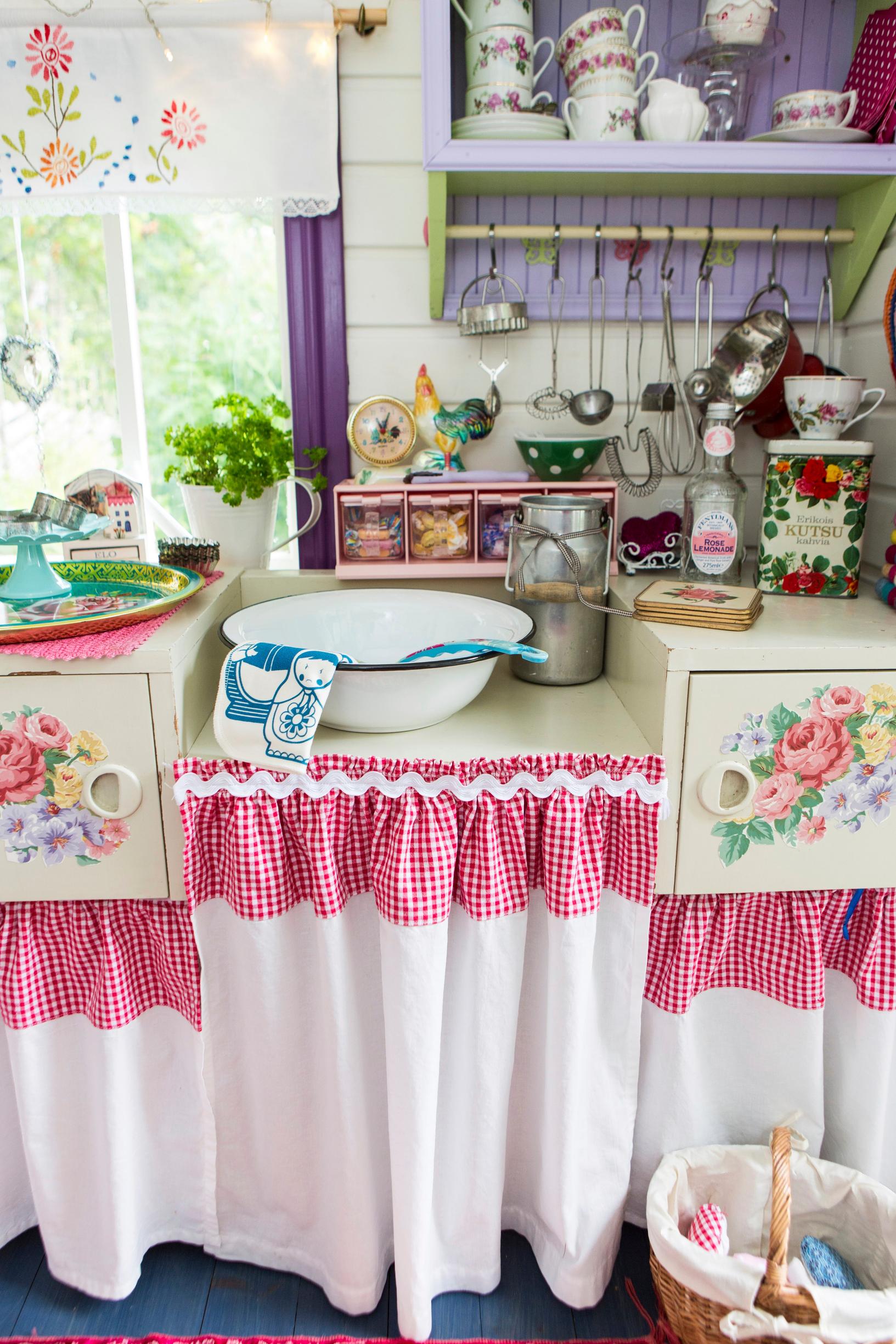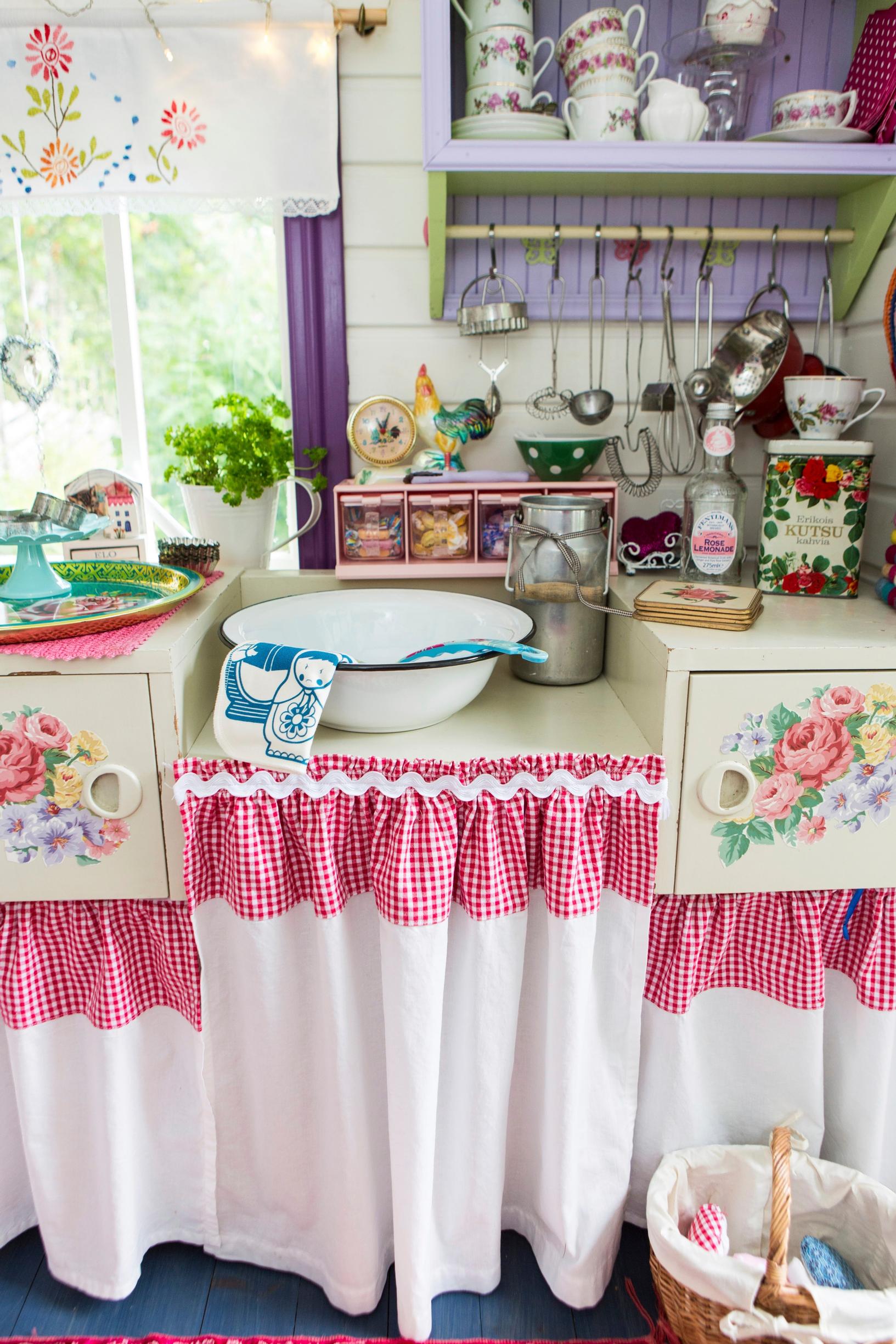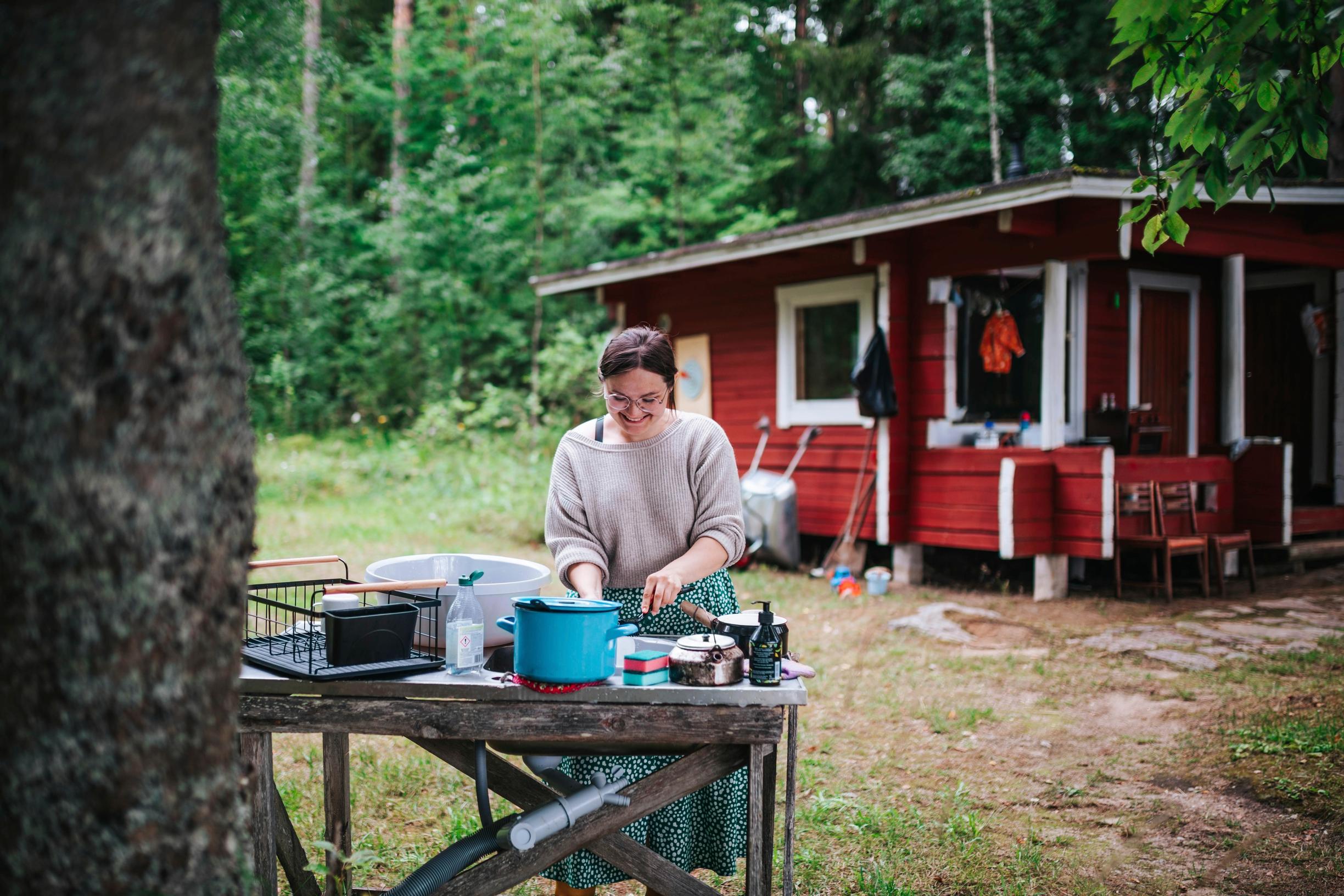
Handwashing still rules at Finnish cottages—but when did detergent come along, and who invented the drying cabinet?
Oh, those were the days when dishwater was carried from the well and heated on the stove until it was scorching hot. For many Finns, washing dishes by hand still feels like the genuine cottage experience.
Dishwashing gained significance in Finland after the Middle Ages, as the bourgeoisie accumulated wealth and had money left over to buy extra dishes. Well-off families could purchase red clay dishware or invest in fine imported goods through Hanseatic traders, including pale European faience.
Up until the early 1900s, poorer households had a fairly easy time with dishwashing because there might have been only a few dishes in the entire home. Personal tableware wasn’t used; instead, people ate straight from the cooking pot or placed food in wooden serving dishes or on boards.
All it took for dishwashing was each person licking their wooden spoon clean and tucking it into a gap in the log wall to dry. Cooking and serving dishes were scrubbed using a pot brush made from small twigs or thin roots gathered and tied together from the surrounding forest.
Washing dishes was considered especially appropriate for young girls, training them to become future homemakers.


Once dishes began to stack up as prosperity grew, washing them typically fell to women, children, or hired help. It was seen as especially fitting for young girls, preparing them to be future homemakers. In wealthy families, a servant generally handled the dishes, often a “little maid” under 12.
Washing dishes took time because water had to be carried from the well and heated on the stove or in a kettle—often to a point where it was scalding hot. Things began to improve in cities in the early 1900s, when water and sewage networks reached more homes. In rural areas, carrying dishwater remained part of daily life well after World War II.
Early on, both dishwashing and laundry relied on homemade soaps. By the 1800s, the growing chemical industry started providing ready-made cleaning agents.
Fairy dish detergent first went on sale in Britain in 1899. Over time, dish detergents became more user-friendly. In 1926, Fairy switched its main ingredient to olive oil so it would wash more “gently.” Dishwashing tools improved thanks to developments in brush-making and enamel production, resulting in enamel washbasins and tightly bristled dish brushes.
Maiju Gebhard’s dish-drying cabinet revolutionized kitchens.
Before long, special dishwashing workstations began to appear. Early 1900s functionalism transformed kitchens into near-laboratory spaces, where household tasks were carried out as efficiently as on a factory line.
Initially, a sink cabinet was just a two-door cupboard with a metal or thick plastic top. Once running water and drainage systems were installed, a stainless steel sink became standard in kitchens.
Washing dishes got even faster when Maiju Gebhard invented the dish-drying cabinet in 1944. She calculated that Finnish homemakers spent over 30,000 hours—more than ten years—at the sink. To cut this time down, she combined a bottomless kitchen wall cabinet with wooden drying racks she saw in Sweden, eliminating the need to towel-dry dishes. Industrial-scale production of the dish-drying cabinet began in Finland in 1947.


Efficiency and ergonomic principles were soon applied to dish brushes, too. As plastics became more common, the brushes were shaped to fit comfortably in the hand. Many plastic dish brushes follow the iconic 1230 model by Sweden’s Jordan, introduced in 1974. Tom Ahlström and Hans Ehrlich designed that brush, which has sold more than 70 million units.
Manual scrubbing finally ceased to be essential with the invention of the dishwasher. In Finland, dishwashers became more common starting in the 1960s. By the 1990s, about half of Finnish households owned one.
In the 2000s, as cottages became more fully equipped, dishwashers made their way into summer homes, although handwashing dishes remains part of the cottage experience. According to a 2021 Cottage Barometer by the Natural Resources Institute Finland, about one in five cottages has a dishwasher.




